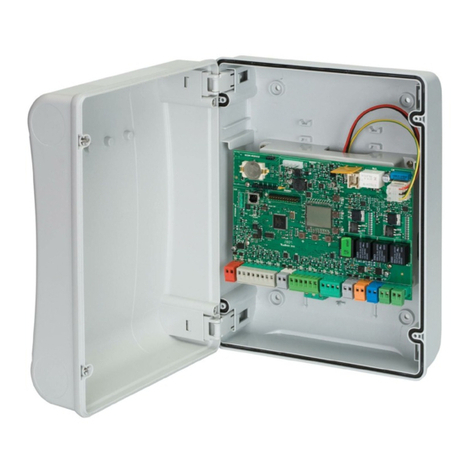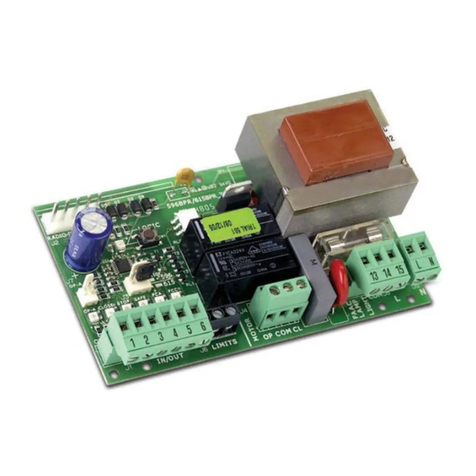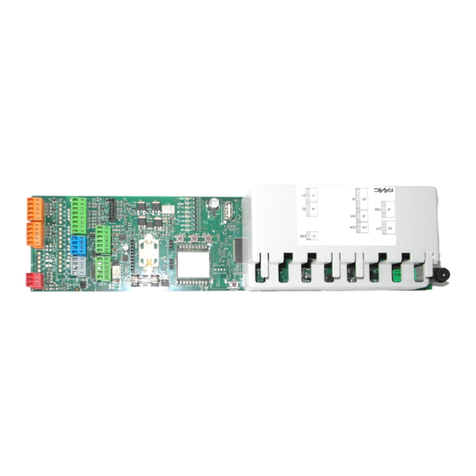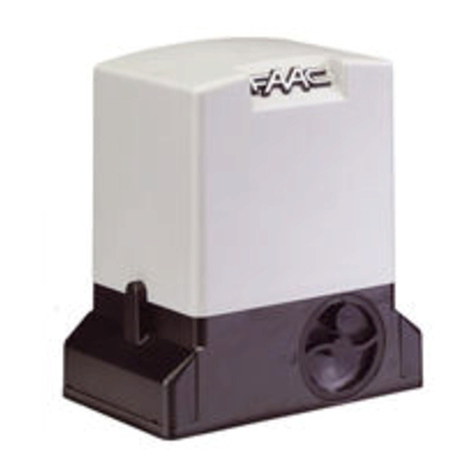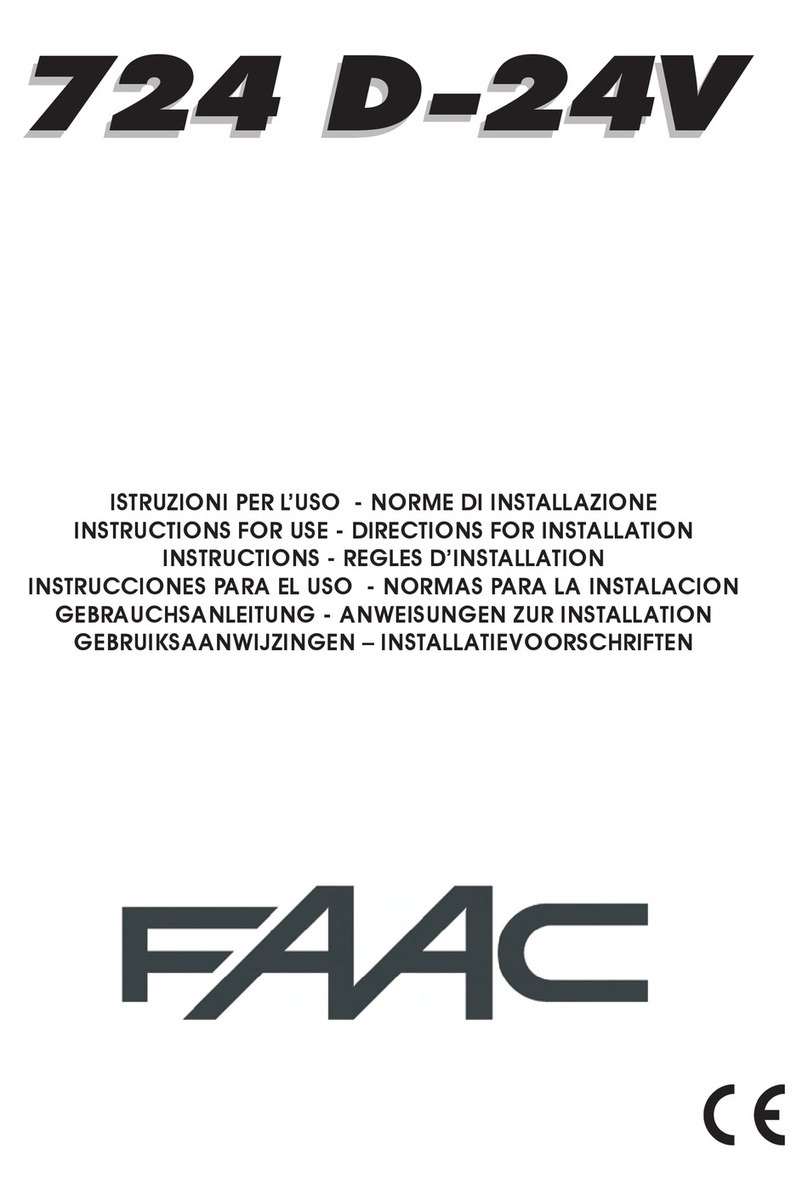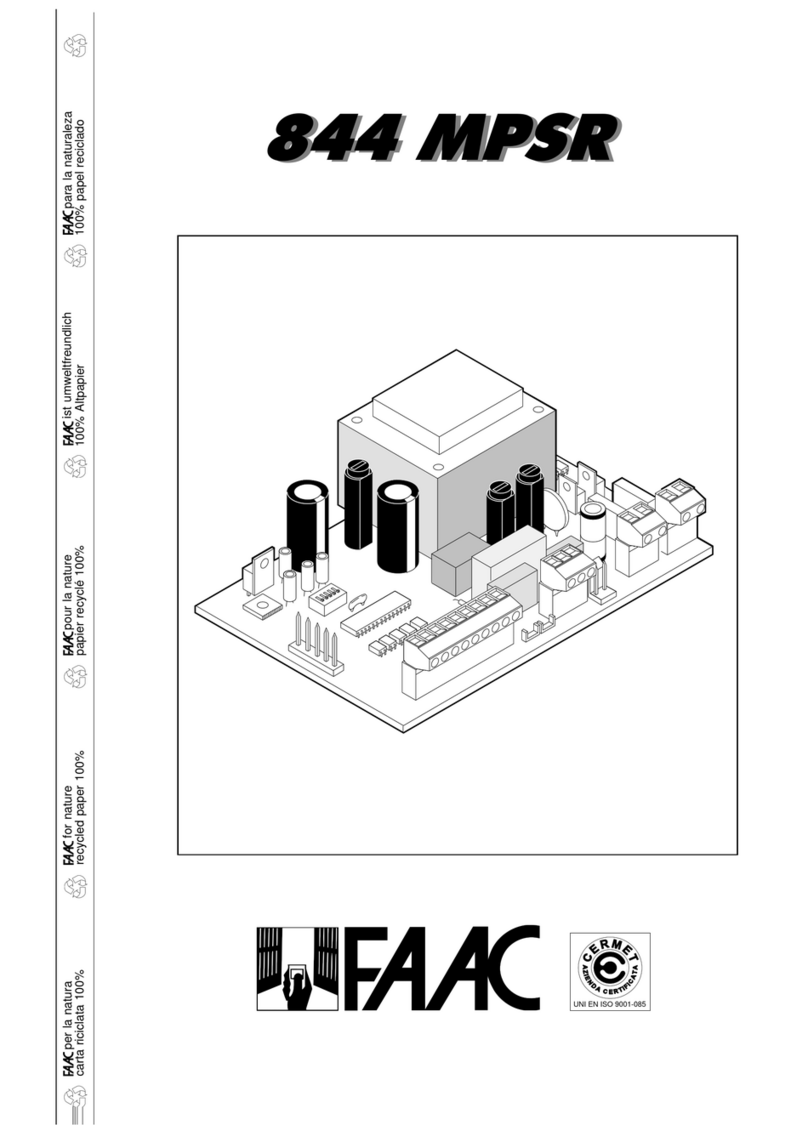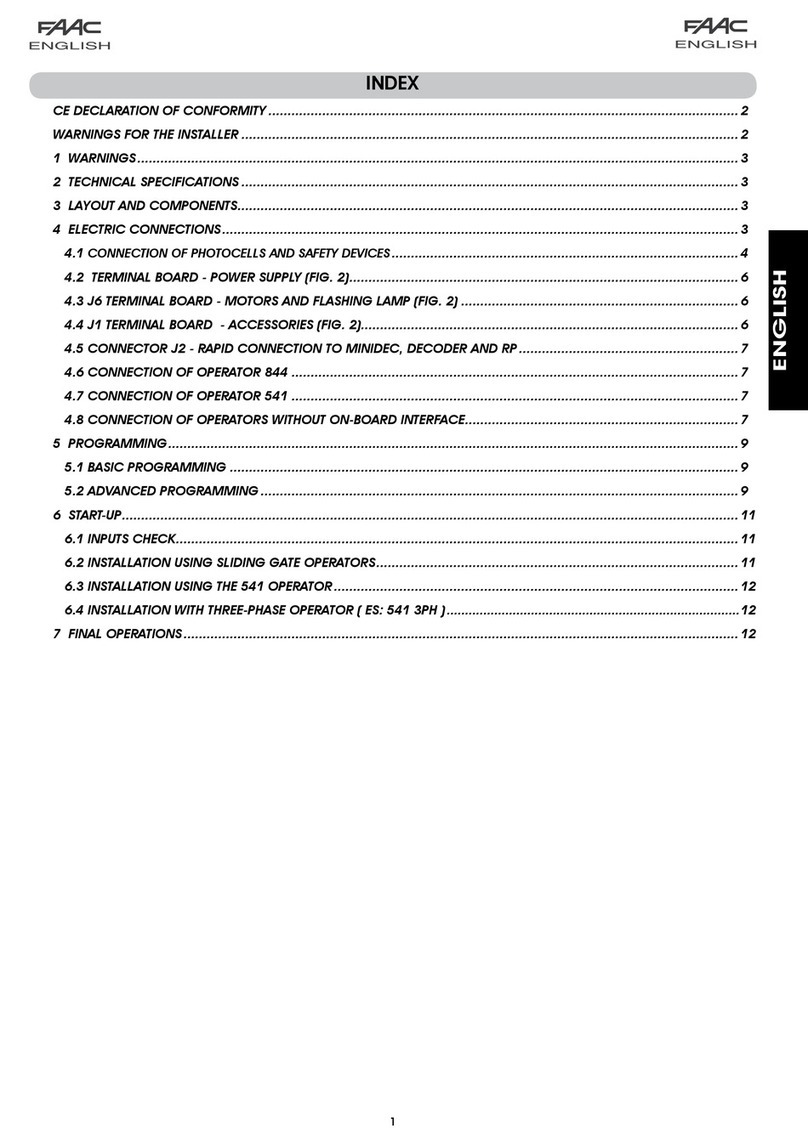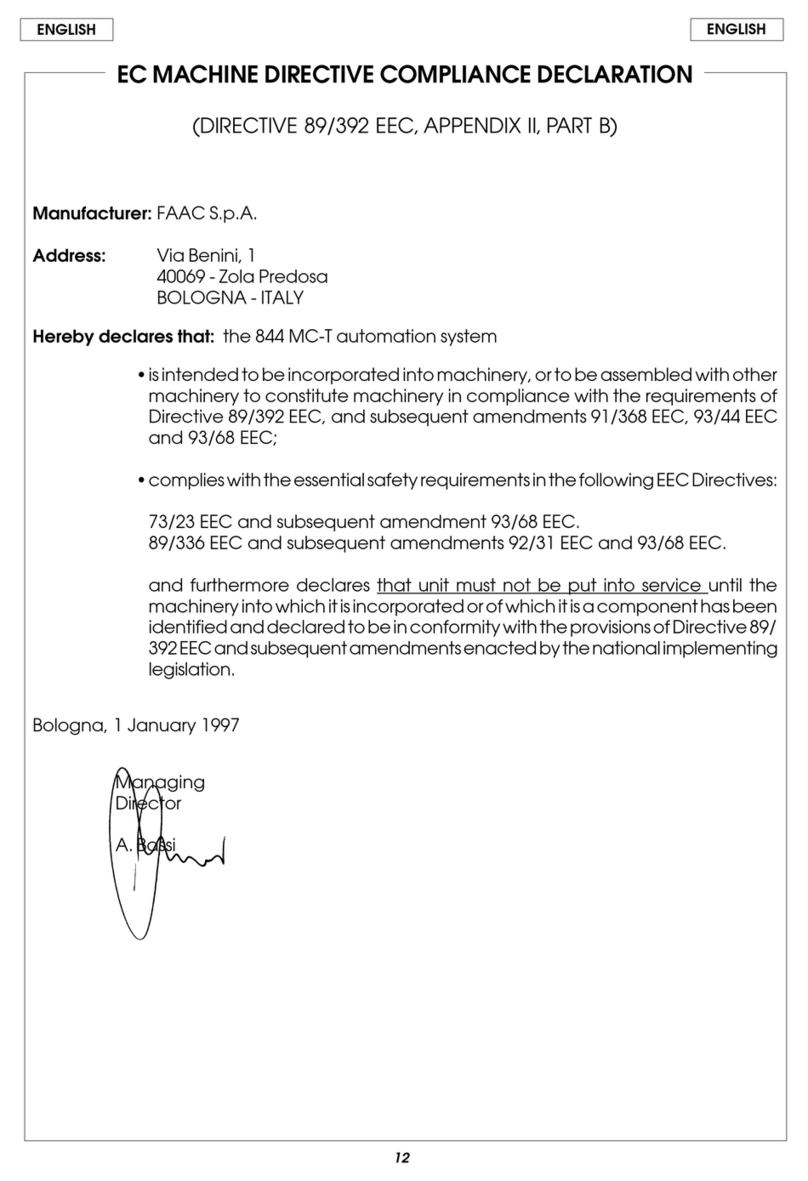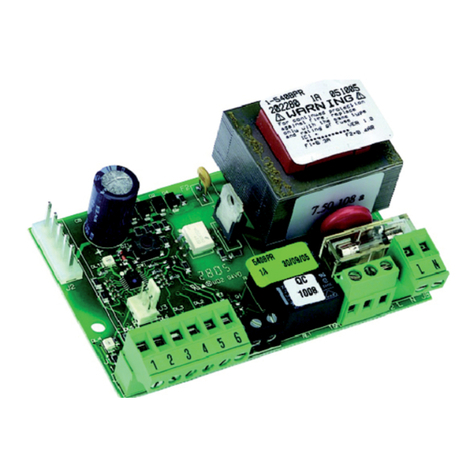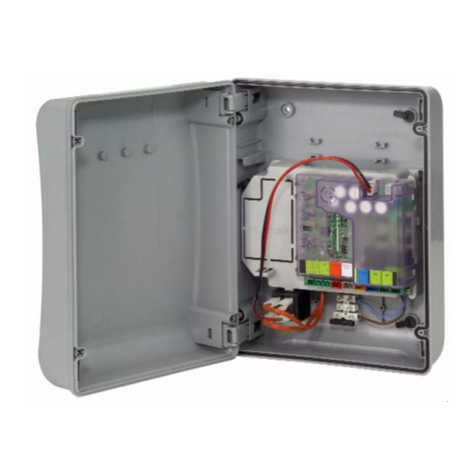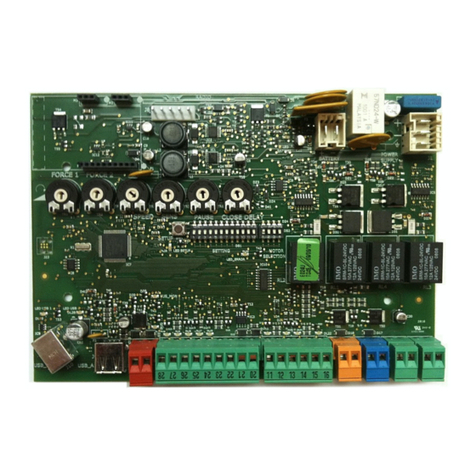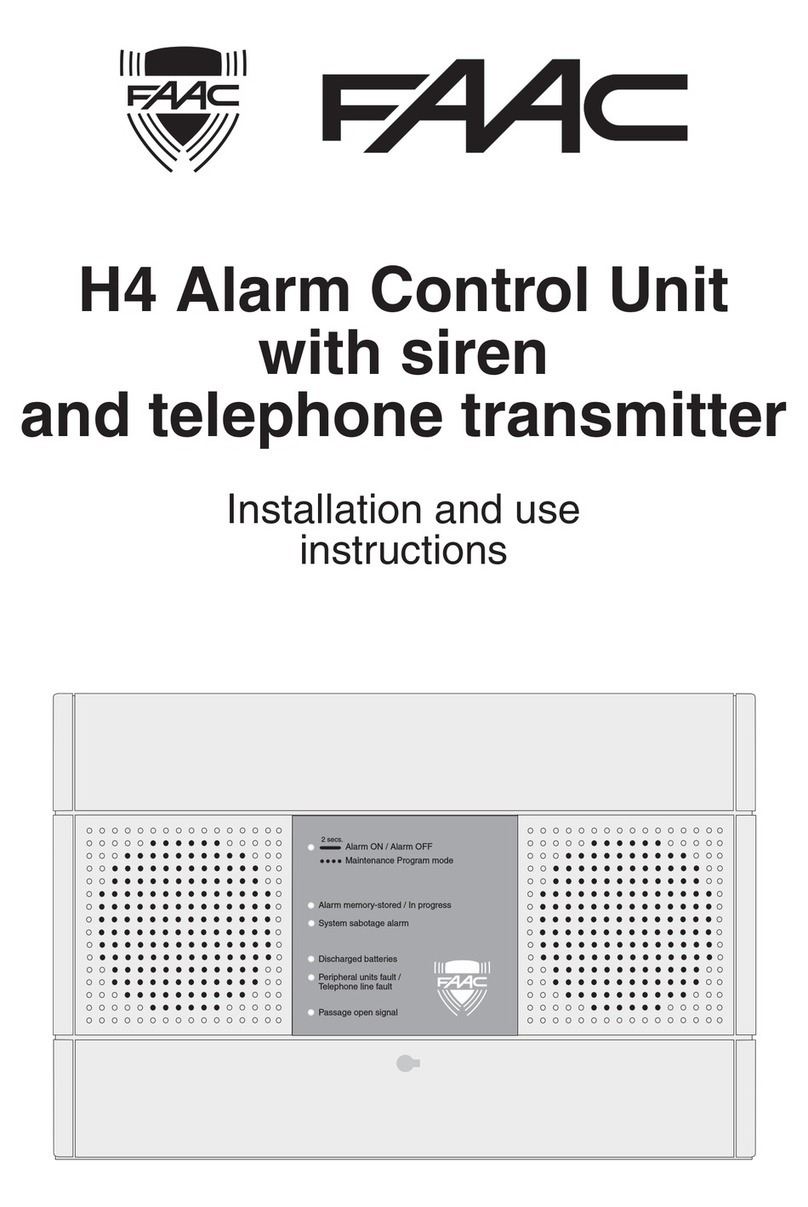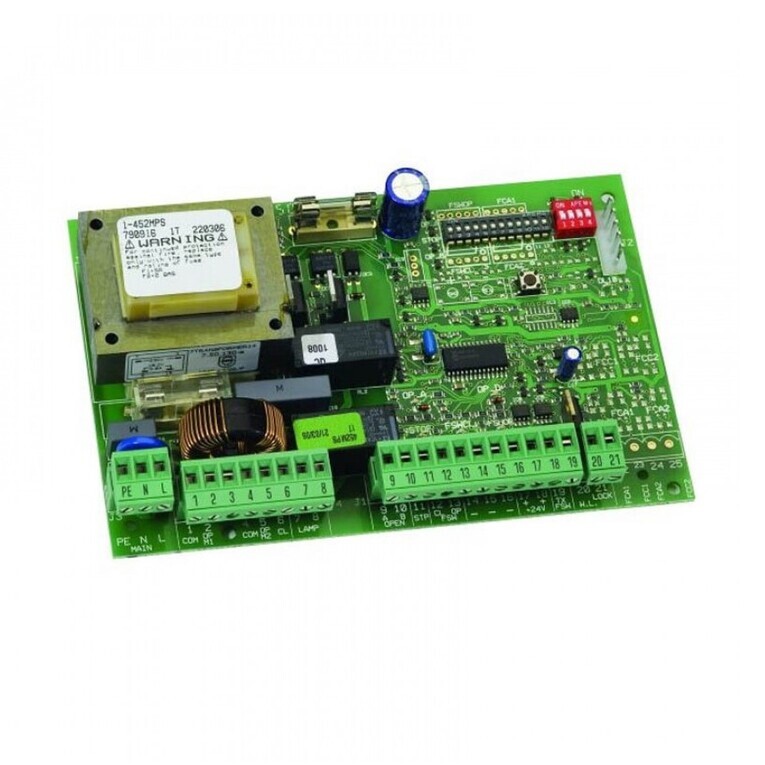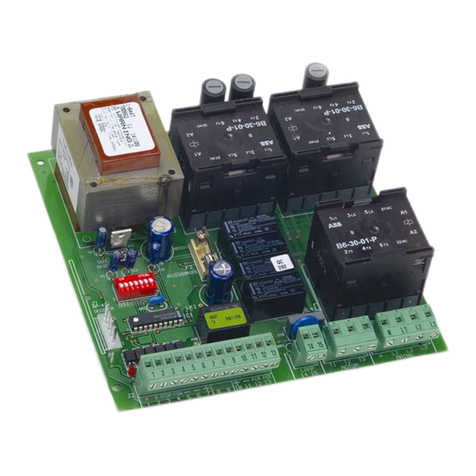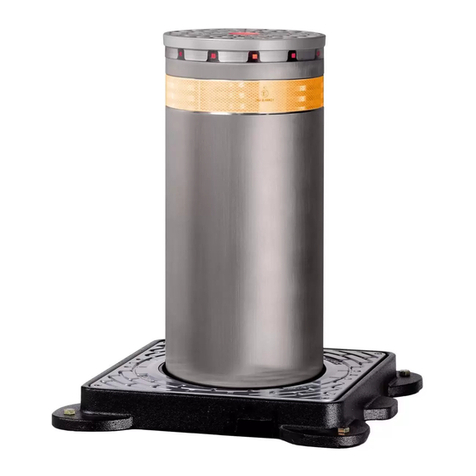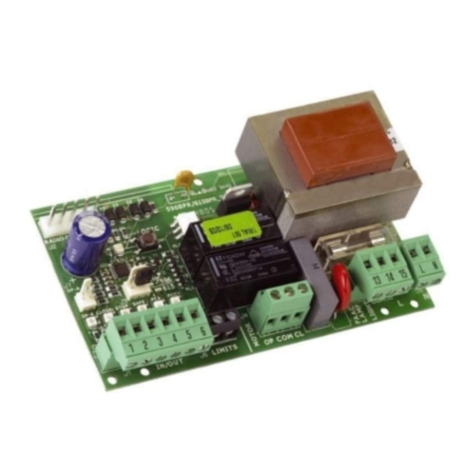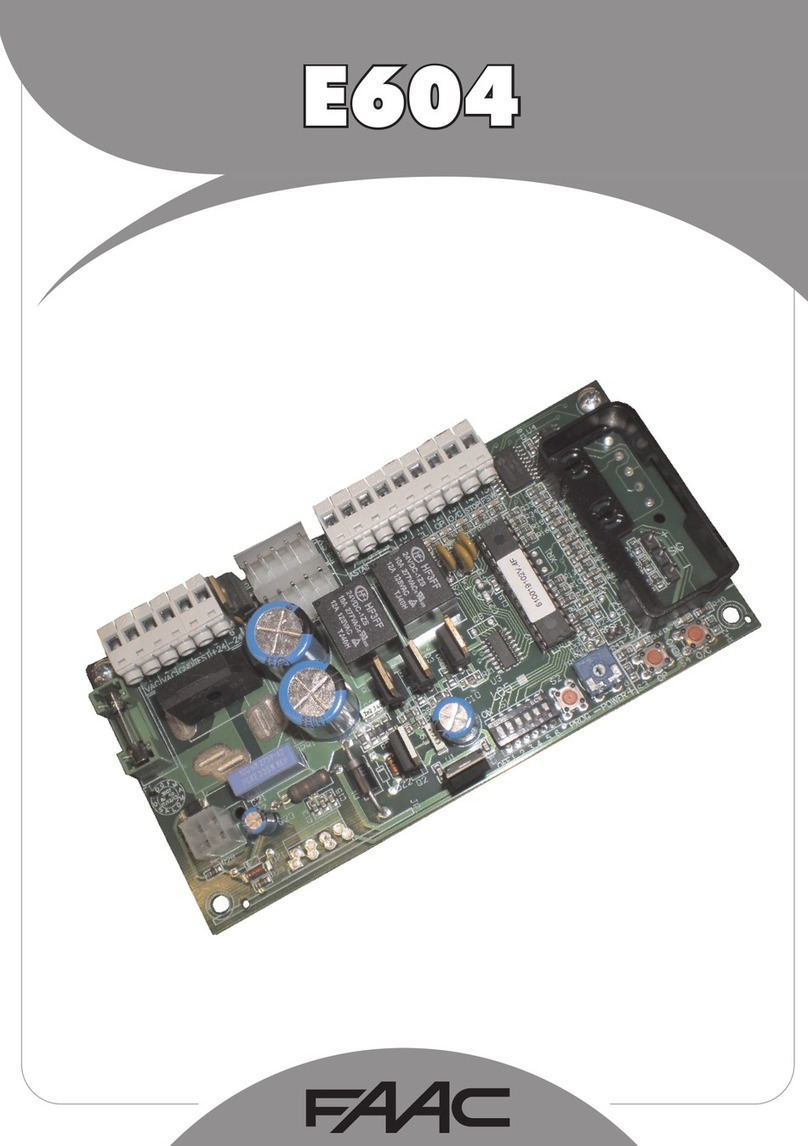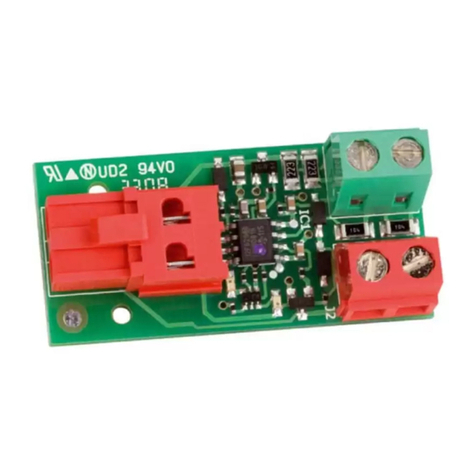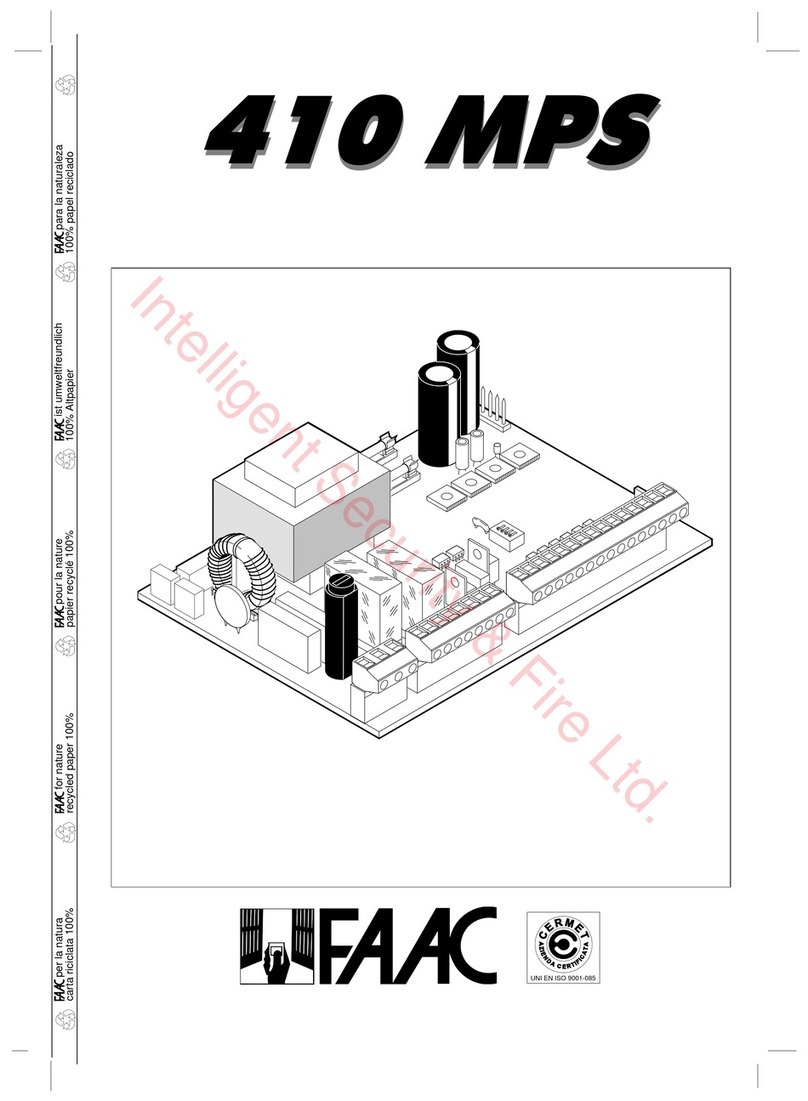
E145 3 732784 - Rev. A
ENGLISH
WARNINGS FOR THE INSTALLER
GENERAL SAFETY OBLIGATIONS
13. Make sure that the earthing system is perfectly
constructed, and connect metal parts of the
means of the closure to it.
14. The automated systems that feature a built-in anti-
crushing safety device in any case require a
functional check in accordance with the pro-
visions of the Standards indicated at point 9.
15. The safety devices (EN 12978 standard) protect
any danger areas against mechanical mo-
vement Risks, such as crushing, dragging,
shearing, lifting.
16. Use of at least one indicator-light (e.g.: flashing
lamp) is recommended for every system, as
well as a warning sign adequately secured.
17. FAAC S.p.A. declines all liability as concerns sa-
fety and efficient operation of the automated
system, if system components not produced
by FAAC S.p.A. are used.
18. For maintenance, strictly use original parts by
FAAC S.p.A.
19. Do not in any way modify the components of the
automated system.
20. The installer shall provide the User with all infor-
mation concerning manual operation of the
system in case of an emergency.
21. Do not allow children or adults to stay near the
product while it is operating.
22. Keep radio controls or other pulse generators
away from children, to prevent the automated
system from being activated involuntarily.
23. Transit is allowed only when the automation is
fully open.
24. The User must not attempt any kind of repair or
direct action whatever and contact qualified
personnel only.
25. Anything not expressly specified in these instruc-
tions is not permitted.
1. ATTENTION! To ensure the safety of people, it
is important that you read all the following
instructions. Incorrect installation or incorrect
use of the product could cause serious harm
to people.
2. Carefully read the instructions before beginning
to install the product.
3. Do not leave packing materials (plastic, polystyre-
ne, etc.) within reach of children as such
materials are potential sources of danger.
4. Store the instructions for future reference.
5. This product was designed and built strictly for
the use indicated in this documentation. Any
other use, not expressly indicated here, could
compromise the good condition/operation of
the product and/or be a source of danger.
6. FAAC S.p.A. declines all liability caused by impro-
per use or use other than that for which the
automated system was intended.
7. Do not install the equipment in an explosive at-
mosphere: the presence of inflammable gas
or fumes is a serious danger to safety.
8. FAAC S.p.A. is not responsible for failure to
observe Good Technique in the construction
of the closing elements to be motorised, or for
any deformation that may occur during use.
9. The installation must conform to Stan-
dards EN 12453 and EN 12445.
For non-EU countries, to obtain an adequate
level of safety, the Standards mentioned abo-
ve must be observed, in addition to national
legal regulations.
10. Before attempting any job on the system, cut out
electrical power and disconnect the batteries
if present.
11. The mains power supply of the automated system
must be fitted with an all-pole switch with con-
tact opening distance of 3mm or greater. Use
of a 6A thermal breaker with all-pole circuit
break is recommended.
12. Make sure that a differential switch with threshold
of 0.03 A is fitted upstream of the system.
MEANING OF THE SYMBOLS USED
Important for the safety of persons and for the
good condition of the automated system.
Notes on the characteristics and operation of
the product.












